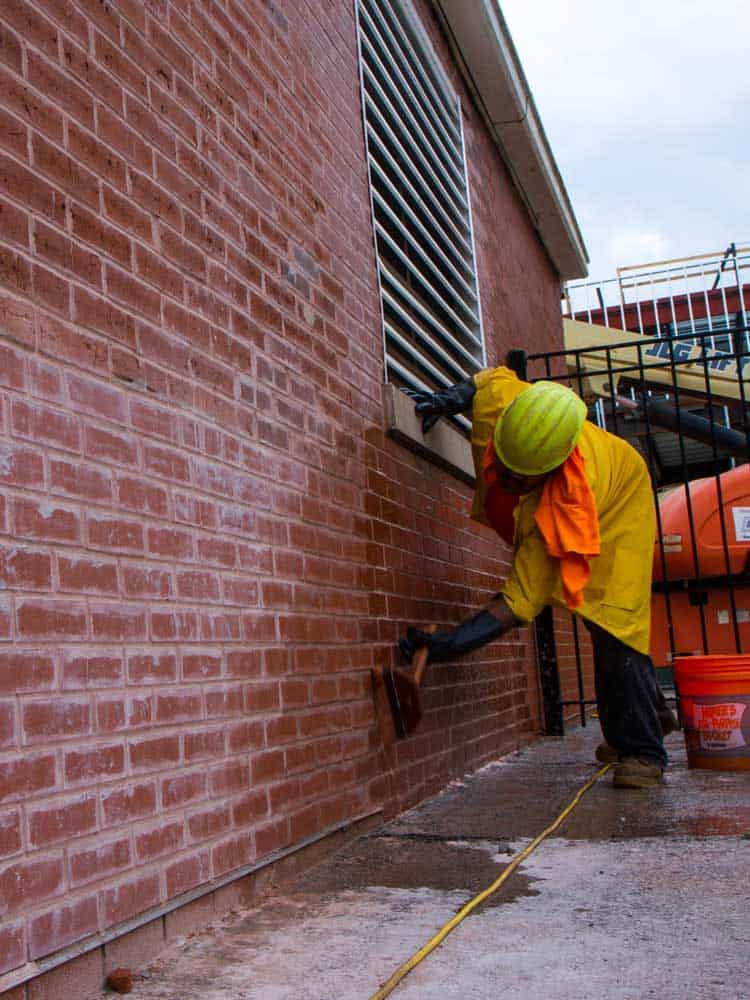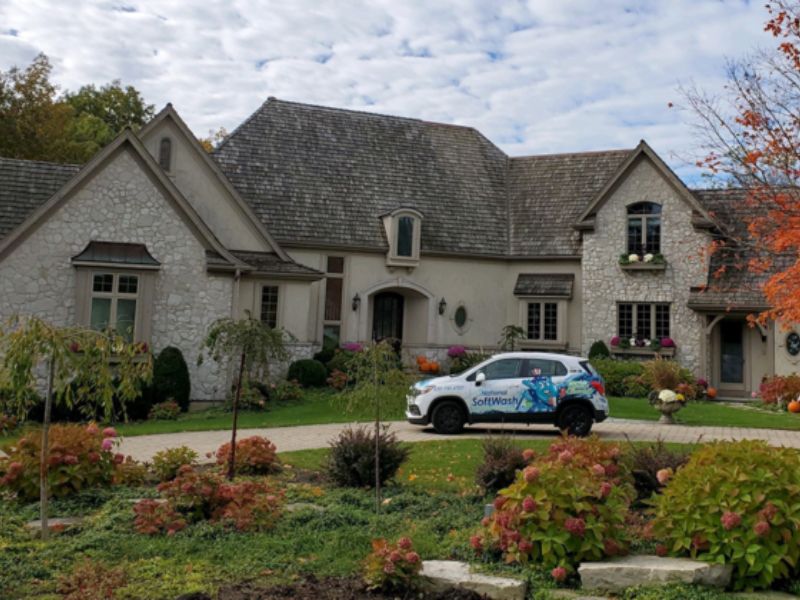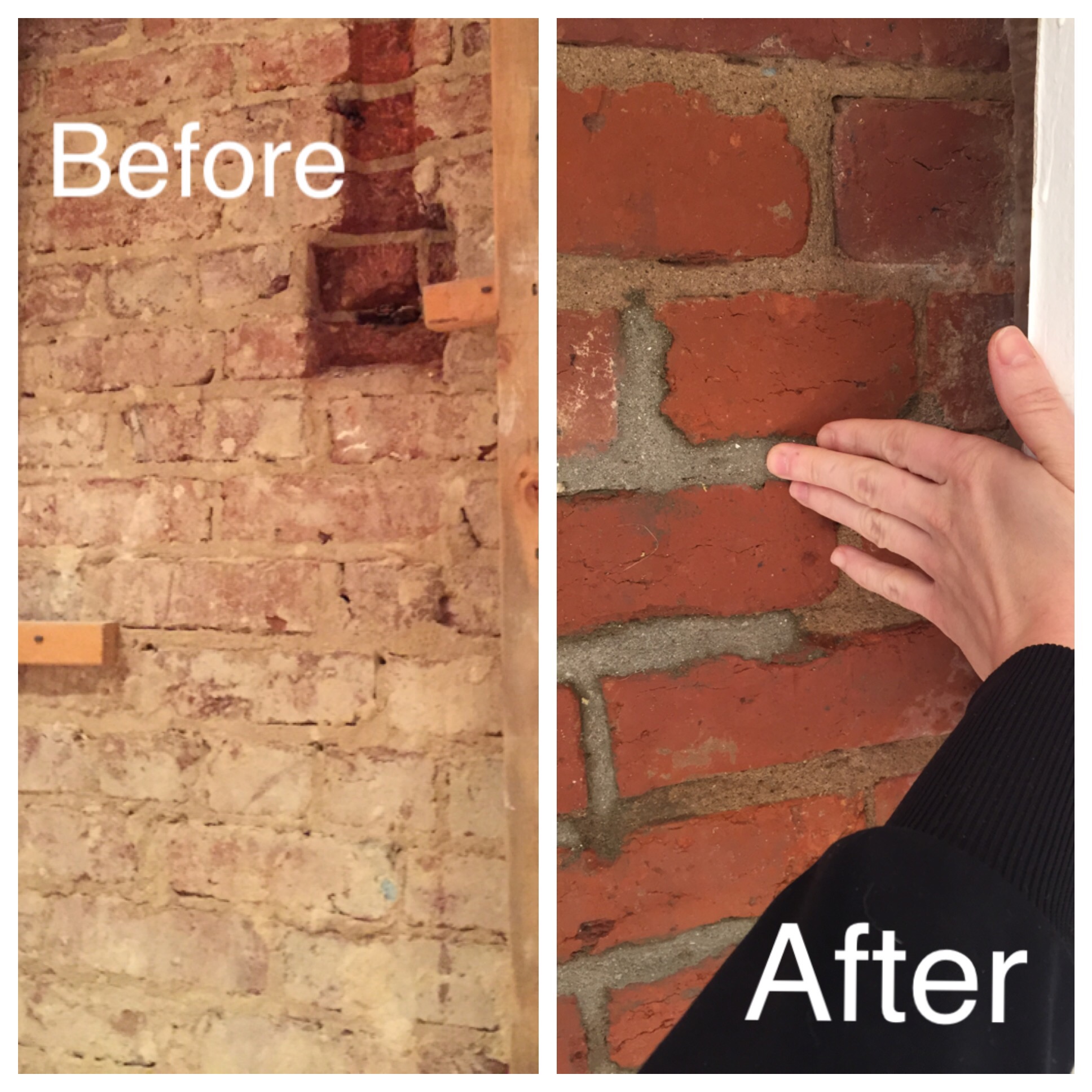Some Known Incorrect Statements About Brick Cleaning
Wiki Article
The Of Brick Cleaning
Table of ContentsThe Best Strategy To Use For Brick CleaningSome Known Factual Statements About Brick Cleaning Some Ideas on Brick Cleaning You Should KnowBrick Cleaning Can Be Fun For EveryoneThe Of Brick Cleaning
Block is gorgeous, but can be an eye sore when it is expanding bacteria. Porous surface areas, such as brick, nurture wetness and also create a reproducing environment for mildew and also algae to grow. It is a tough surface and also can hold up against brick stress cleaning, however, high stress cleaning alone will only cleanse the surface of the discolor and press the microorganisms even more right into the pores of the block.The solutions permeate the pores of the brick, and afterwards are simply washed away. In cases where germs development is heavy, pressure washing may be utilized to rinse.
In historical masonry restoration the thinking can involve more thought and worry for the stability of the masonry. With this short article I mean to briefly describe some of the different types of stonework discoloration as well as some considerations commonly taken on in the early stages of historical masonry restoration as it is relevant to the cleaning of historical masonry.
The 8-Second Trick For Brick Cleaning
The very first is for appearances as well as the 2nd is for the stability of the masonry itself. It might amaze some that visual appeals is not the single factor to consider for cleansing historic stonework. As a matter of fact, lots of owners of historical structures might not understand their building requires to be cleaned up for the honesty of the stonework.Typically it only takes a percentage of tidy water with a scrub brush to see the distinction when the messing is gotten rid of. Taking a look at the stonework from the viewpoint of an expert historical stonework restoration specialist angle can open a much more detailed array of problems such as biologic development and also mineral efflorescence (more on these later in the write-up) that can be destructive to the long life of the structure itself.

Brick Cleaning for Dummies
If you are thinking about a historical stonework cleaning task, I highly advise that you obtain a seasoned historic masonry specialist on board as early in the process as feasible. As reviewed previously, there are various types of discoloration and also dirtying that take place within historical masonry. I will certainly provide and also go over a few below with some cleansing techniques.have a peek at this site

If after testing it is figured out that even more cleansing is wanted, a light cleaning agent or non-acidic light duty repair cleaner might be included. Often when cleaning up brick as well as stone facades it serves to include using warm water to the cleansing procedure. Brick Cleaning. These types of discolorations take place when dust, dirt, as well as various other particles in the ambience (air) around a building are transferred externally of the stonework.

Not known Facts About Brick Cleaning
When this is taking place, it is usual to see black discoloration at the masonry, the black color originates from the bacteria development and also not the carbon - Brick Cleaning. Softer as well as more permeable stones such as sedimentary rock will frequently display this kind of staining especially at the features that stand out from the wall surface such as at cornices, copings, as well as specialized window attributes.Plant development is especially destructive to historic masonry structures as well Discover More as must constantly be removed immediately upon discovery. It is essential that all the plant's origins are removed which might call for removal as well as resetting of the impacted stonework by a skilled historic mason. Commonly this occurs when plants, such as ivy, expand near the base of a masonry structure and send runners up the wall which can get hold of the small pores in the masonry or the surrounding mortar joints.
Efflorescence is a natural incident in masonry frameworks. It refers to the normally taking place minerals or salts within the stonework being pulled out to the surface through evaporation of wetness which has the liquified minerals. When the wetness reaches the surface area of the stonework it will evaporate leaving the minerals behind.
The 9-Second Trick For Brick Cleaning
Metallic staining can be stubborn to get rid of. Some staining may be removed by specialized cleaners that are extremely acidic which can hurt surrounding masonry, so it is vital to examine initially in a small location and make sure to maintain the cleaner as targeted as possible. Other methods of metallic discolor removal include differing kinds of plasters being composed, primarily, of an absorbing material such as cells paper or clay with a cleansing option that is entrusted to dry on the stonework as well as is meant check this to pull the stain out of the pores.
Others include unpleasant strategies utilizing specialized aggregate such as glass grains, cooking soft drink or sponge product. When managing any rough technique it is extremely crucial to examine initial and also totally recognize what is happening to the surface of the framework before picking this kind of cleansing for historical structures.
Report this wiki page